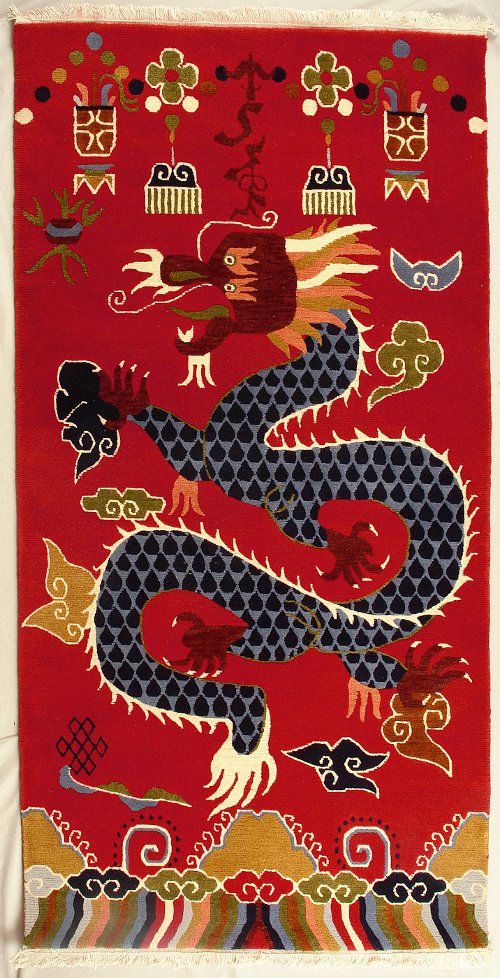| Next > |
|---|
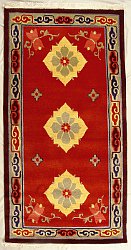 I found an interesting article in Asia Times from August 17, 2010, with the headline Nepal's Carpetmakers Cry for Help. The article is about the ailing Nepalese carpet industry with interesting facts and figures about the development and the current situation of the rug industry in Nepal, the problems and the competition with the Indian carpet industry.
I found an interesting article in Asia Times from August 17, 2010, with the headline Nepal's Carpetmakers Cry for Help. The article is about the ailing Nepalese carpet industry with interesting facts and figures about the development and the current situation of the rug industry in Nepal, the problems and the competition with the Indian carpet industry.
Difficult Situation for Nepal's Rug Industry in 2010
The article also reveals the average monthly income of carpet workers in Nepal and India. Please sit down before you continue to read. It is US$ 32 in India and US$ 60 in Nepal. Per month, not per day!
For most of you this number will be disturbing, I hope. How come? In my humble opinion, the pressure on labor costs is primarily a result of consumers' behavior in the Western importing countries.
Check Google™ for search terms and ads around Tibetan rugs and you will find rugs for sale, Save 50% and more and all this despicable bargain hunter yelling. Large rug sales outlets in the USA or Europe compete for clients primarily by price or at least by pretending to be a permanent source for bargains. But obviously it works for carpet dealers. If not, they would stop doing it.
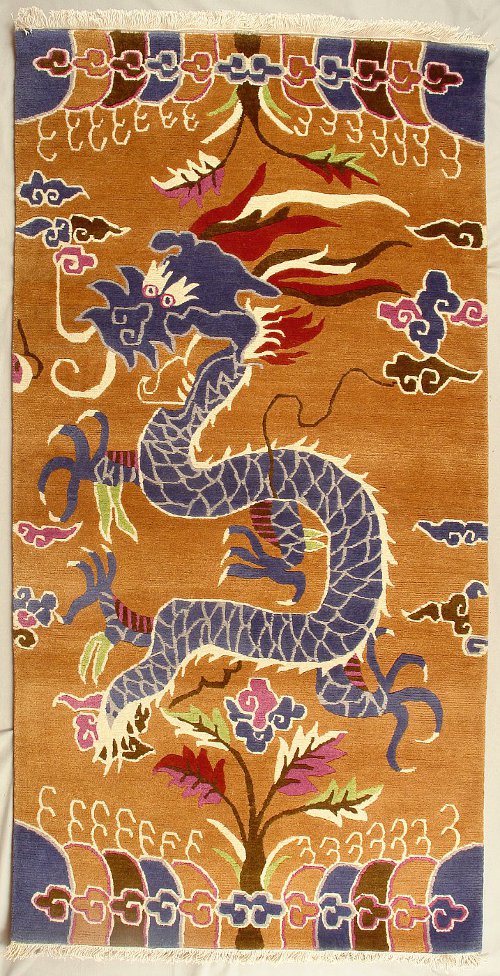
Consumer Mentality as a Cause and Effect Circle
The result of this mentality of 'cheap, cheaper, cheapest' is like the condition of cause and effect, called karma in Buddhist teachings. The effects are the exploitation of people in the carpet producing countries, and a tendency towards a decline in quality. And with it comes a decay of business ethics. Merchants think they can only stay in business by pressing the producers for the lowest purchase price and by fooling the consumers with sleazy sales methods.
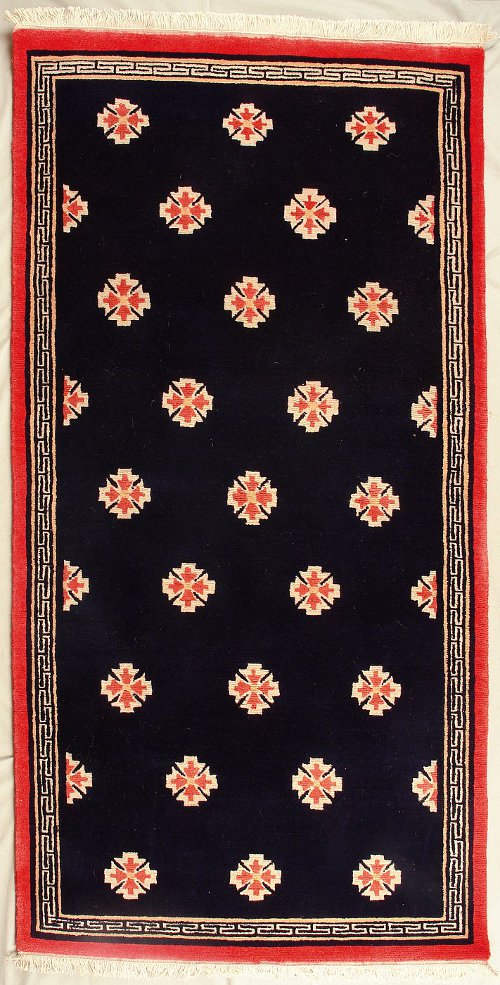
More Awareness for Fair Behavior and for Quality
It is a part of human greediness to look for 'cheapest'. And let's not forget. There are also many who cannot afford a different attitude in order to make ends meet.
However, in my view, there is an increasing number of people with a sense for fair, economic behavior. And there has always been a large group of consumers with an awareness for the advantages of buying quality. A responsible, even altruistic behavior in one's economic decisions has something to do with one's own economic independence and the stability of the economic and social system in which the individual is embedded. From field tests in behavioral science we know that the more people behave fair, the more this attitude will become the accepted social standard.
The knowledge about the importance of quality comes with experience. It takes a number of poor decisions in your life to recognize that it is often cheaper to spend a little bit more for quality.
Split Markets
You usually have two different market sections, a cheap mass market and a smaller market segment with the emphasis on quality.
The car industry is a good example. German car makers have concentrated on expensive, high quality cars. Historically, they came out of all world recessions with the least problems.
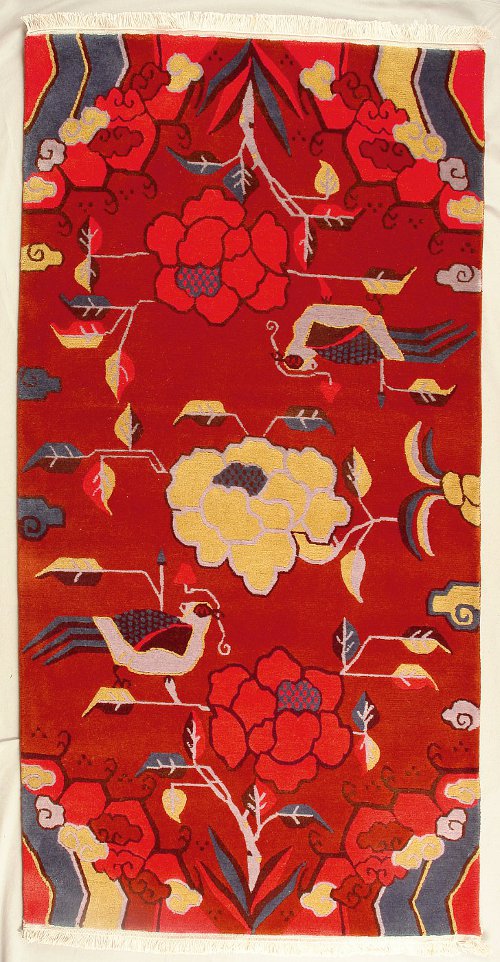
Can you Create Consumer Awareness?
Is it possible to influence the mentality of Western consumers towards the effects of their economic behavior? On long term, maybe. It is a general problem. Not only with rugs made in Nepal, but in by far larger dimensions with the exploitation of Chinese or Indian or other Asian labor for all kinds of cheap products. Someone who buys a pair of sneakers made in China in a discount market for Euro 19,99 knows that this price is at the expense of someone else - a factory worker in China. And secondly, experience should tell the potential consumer that the product cannot be of high quality. Nevertheless, so many people buy such products from such places.
Can we Stop Exploitation?
Should governments intervene to stop the exploitation of workers in carpet producing countries? For instance with minimum wages or minimum export prices? I have never been a friend of state-controlled markets. But in my opinion, something like minimum wages for workers could be a feasible way, provided the country has the necessary infrastructure to enforce such laws.
To my knowledge, the USA have a regulating law for minimum wages, different from state to state. Please correct me if I am wrong. Why should it not be in accordance with a free economy and a democratic society?
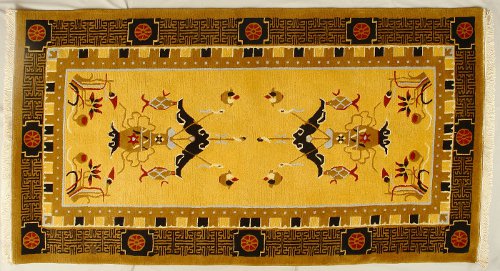
The Problem of the Nepal Carpet Industry
The whole messy situation is in my view also due to a self-made problem of the Nepalese carpet industry. They grew too fast in the 1980s and 1990s. And in order to grow, they jumped on cheap mass production by accommodating to Western tastes, and by giving up the original identity of the Tibetan rugs as they once were.
That is in my view the major problem. Tibetan rugs as they once were made in Tibet are a fascinating product of excellent quality. But with their strong colors and unusual designs, traditional Tibetan rugs certainly do not appeal to the large majority of Westerners. I think this is the general situation for Asian arts and crafts. A small minority goes crazy for it, and the large majority simply does not like it.
In the 1970s the Tibetan and Nepalese carpet manufacturers, influenced by Western importers and interior designers, began to change the product in direction of the tastes of the majority of Western consumers. The result is what you see when you 'google' for 'Tibetan rugs' or 'Nepal rugs'. Endless hits for retail shops with boring, dull carpets that have only the weaving technique in common with the original Tibetan rug.
When you try to please everyone, you must make compromises. And with too many compromises you risk that nobody will find you attractive in the end. Sometimes it is better to restrict yourself to a comfortable market niche than to expand by all means.
Now the Nepalese carpet industry finds itself trapped in a market in which for 99% of their production competition is primarily fought by price and not by quality. I give you an example. When a buying agent of a large German carpet chain negotiates with a carpet manufacturer in Nepal, he does not discuss rug designs nor quality nor the conditions of the workers. He specifies the volume of the potential order in square meters and wants a quote per square meter. And then begins a merciless haggling.
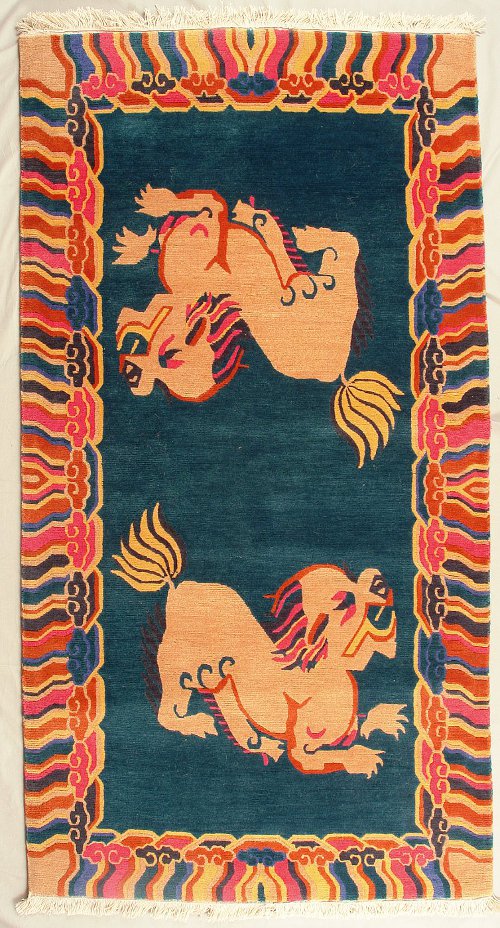
JHC - Jawalakhel Handicraft Center
By the way, the Asian Times article mentions an abbreviation you cannot be familiar with - JHC. It stands for Jawalakhel Handicraft Center, and it is a good place to buy a Tibetan rug if you should happen to come to Kathmandu in Nepal. Follow the link and read my article about the Jawalakhel Handicraft Center and refugee camp.
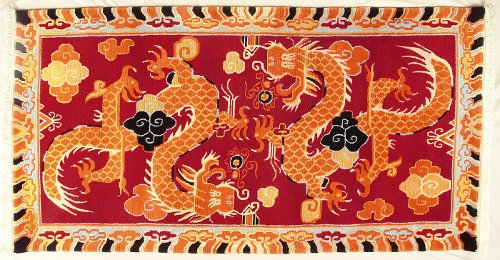
The Rug Images on this Page
I should maybe comment the rug images on this page. It would have been adequate to show on this page the kind of modern designs that I think are partly to blame for the problems of the Nepal carpet industry. But as artelino does not sell such carpets, we have no such images.
Instead we show you images of the good old, traditional Tibetan rugs that I have liked so much ever since I saw them more than 30 years ago for the first time. I am proud to sell them in my Tibetan online shop.
Dieter Wanczura, October 2010.
